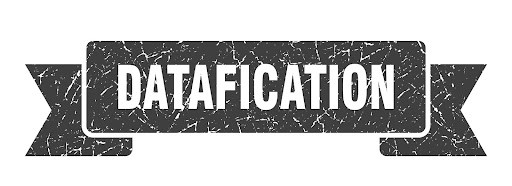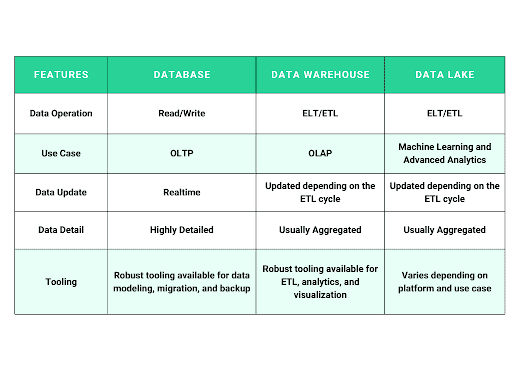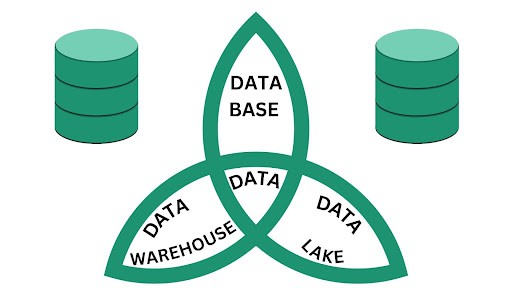Databases, Data Warehouses & Data Lakes – The Best Data Storage for Your Business
- Jeffrey Agadumo
- May 29, 2023

By the end of this article, you’ll be able to choose between databases, data warehouses, and data lakes and take your data storage game to next levels.
Let’s begin with this question. Have you ever found yourself in a data storage treasure hunt?
What is that, you say?
The never-ending quest that countless organizations embark on, tirelessly seeking the ultimate data store that’s modern, incredibly efficient, budget-friendly, and equipped with cutting-edge tools that make life a breeze for their data teams.
If, on your journey, you’ve stumbled upon terms like databases, data warehouses, and data lakes and found yourself wondering how they differ and which one best suits your needs, then you’re on the right page!
Navigating the sea of data management options can feel like finding a needle in a haystack, but fear not! We’re here to demystify these concepts and give you a clear understanding of what they are, how they work, and which one might be the best fit for your business.
So grab a donut as we embark on this data adventure together.

Datafication and its Implications on Storage!
“From the dawn of civilization until 2003, humankind generated five Exabytes of data. Now we produce five Exabytes every two days, and the pace is accelerating.”
– Eric Schmidt (Former CEO of Google) .
In case you’re wondering, one exabyte is the equivalent of one billion gigabytes (1,000,000,000,000 GB). So it’s agreeably an insane amount of data being generated daily by internet users. This begs the question: What kind of data makes up the exabytes produced daily?
Once people understood how crucial data was for uncovering hidden insights, they naturally began to ponder life’s ‘bigger picture’ and what information they needed to uncover even more mysteries. This curiosity led to unprecedented data collection spanning all aspects of our everyday lives – a practice that would eventually be termed datafication .
Datafication, in simple terms, is transforming aspects of the physical world into digital data . With the increasing digitization of our lives, everything from our social interactions to our shopping habits is being captured and stored as (unstructured) data. This process has caused a tremendous surge in data discovery and new challenges on where to store it all.
Whether you’re looking to store your company’s enterprise data or large sets of unstructured information, this article will help you identify the ideal data storage option. By the end of this piece, you’ll clearly understand which storage method suits your specific data needs.
Now let’s look at these data storage options and determine what makes each so unique!
Analyzing the Data Storage Triad
Choosing the proper storage for your data depends on two key factors: the purpose of the data and its volume. Therefore, we will actively examine each data storage option, focusing on its primary uses and storage capacities.
1. Databases
Databases are structured data storage systems primarily designed for Online Transaction Processing (OLTP) . They excel in transactional systems like online shopping or banking, where quick retrieval and processing of large volumes of structured data are crucial.
The specific structure of databases may vary depending on the chosen database model. Essentially, a data model serves as the blueprint for a database, determining the data format and organization.
Some commonly known database models and Database Management Systems (DBMS) that use databases include:
-
Relational Database
This model is the most commonly used one, storing data in tables with rows and columns. Relationships between tables are established using keys, and data can be queried using SQL for easy retrieval and manipulation. Some examples include MySQL, PostgreSQL, and CockroachDB.
-
Document Database
This model stores data in a document-oriented format with no strict rules for a data structure. As a result, it allows flexibility and scalability and is useful for fast retrieval and managing unstructured data. Some examples include CosmosDB and MongoDB.
-
Graph Database
In this database, data is stored as nodes and edges, which is ideal for managing complex data with many-to-many relationships, such as social networks, logistics networks, and recommendation systems, and uses the Cypher query language for analysis. Some examples include neo4j and Amazon Neptune.
-
Wide-Column Database
The wide-column database model, a type of NoSQL database, organizes data in columns rather than rows. This structure is well-suited for large-scale applications like content management systems and analytics platforms. Columns can have different data types; you can add or remove columns without impacting the whole database. Some examples include Cassandra and HBase by Apache, Google BigTable, and ScyllaDB.
Running analytical processes on a database can be tasking as OLAP involves complex queries that require aggregating data (both current and historical) across large datasets and performing complex calculations. Cue the other two options!
2. Data Warehouses
Data warehouses are large, centralized data repositories specifically designed to support Online Analytical Processes (OLAP) , such as data analysis, reporting, and decision-making. They are optimized for querying and analysis rather than transaction processing, which is the primary focus of operational databases.
It specializes in integrating data from multiple sources, such as operational databases, external data sources, and spreadsheets. This integration enables users to perform complex analyses and gain insights that would be difficult or impossible to obtain from respective data sources.
Data warehouses also use ETL or ELT with the transform and load processes interchanges to integrate data from multiple sources and load it into the warehouse.
Popular data warehouses include:
- Snowflake.
- Amazon Redshift.
- Google BigQuery.
- Microsoft Azure Synapse Analytics
3. Data Lakes
A data lake is a centralized storage system for raw and unprocessed data. It can store both structured and unstructured data of any size and type. Data lakes are designed for agility and flexibility, allowing analysts and data scientists to explore and analyze data without spending time preparing data.
They can support a range of use cases, including ad-hoc analysis, machine learning, and AI. However, data lakes also have challenges, such as a need for governance and structure, which require careful management to ensure data quality, accuracy, and security. Data lakes can provide a powerful platform for organizations to store and analyze large amounts of data if managed correctly.
Some popular data lakes include:
- Databricks Unified Analytics.
- IBM DB2.
- Cloudera Data Platform.
Further Comparison

Usually, a table would provide a comprehensive list of metrics to compare different data storage options. However, many modern data management systems have advanced features that blur these distinctions. When choosing the proper data storage, you must consider your specific needs, including the kind of data you’ll store, how you’ll use it, and your data pipeline requirements.
A database is an excellent option if your primary goal is to store real-time data for an online application, such as an e-commerce store. Databases excel at handling structured data that requires fast processing and high availability.
In contrast, a data warehouse is a better fit if you need to extract insights from vast amounts of both real-time and historical data. Data warehouses are optimized for analyzing large, complex data sets and can support ad-hoc queries and advanced analytics.
However, a data lake is the way to go if you need to store vast amounts of raw, unstructured data for big data analytics or machine learning model training. Data lakes allow you to store data in its native format, making it easier to store and process vast amounts of data quickly and cost-effectively. However, data lakes require additional processing and analysis to transform raw data into actionable insights.
In summary, databases are great for keeping track of transactions. Data warehouses are best for analyzing large amounts of data to gain insights, while data lakes are perfect for storing and analyzing big data, including unstructured data.
A Transformation Solution for All Things OLAP
Snowflake is a cloud-based data warehousing platform that provides businesses with scalable, secure, and flexible data storage solutions. It’s unique because it separates storage and computing, making it perfect for businesses that need agility and scalability.
Datameer is the ideal cloud-based data preparation and analytics platform that works exceptionally well with Snowflake. With Datameer, businesses can transform raw data into actionable insights using a wide range of data preparation and analytics tools.
By integrating Datameer with Snowflake, businesses can leverage the scalable storage capabilities of Snowflake with the powerful analytics tools of Datameer. Snowflake and Datameer provide a comprehensive and robust data management and analytics solution that can help drive business growth and success.
Curious to learn more?
Book a quick meeting to see how Snowflake and Datameer can turbo-charge your analytics stack!



